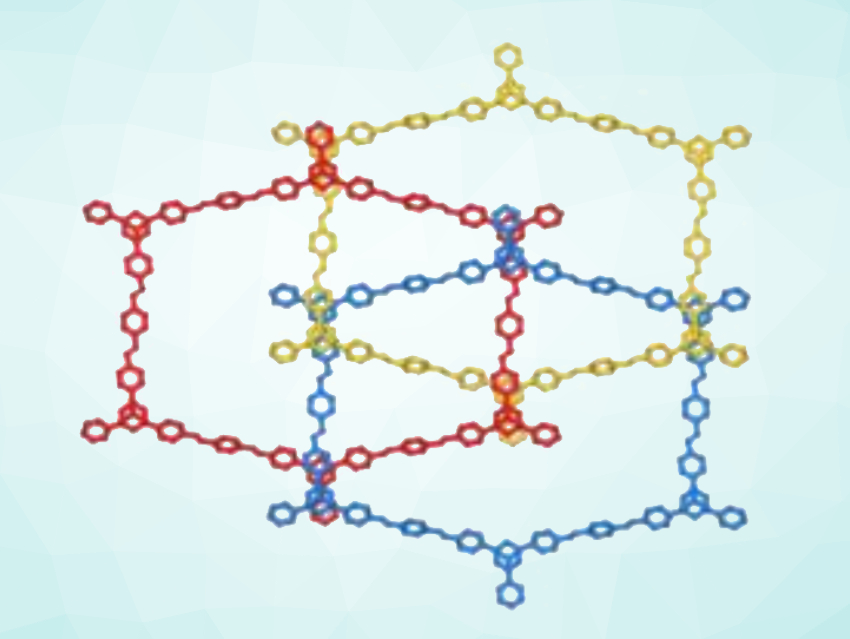In Borromean links, three rings are interlocked in such a way that removing any one ring leaves the other two unconnected (example pictured). This arrangement is topologically interesting and could also be realized using ring-shaped molecules. However, the construction of organic polymeric materials with a Borromean-linked structure had not been reported so far.
Zhenjie Zhang, Nankai University, Tianjin, China, and colleagues have created a Borromean-linked organic polymer. The team used a trisubstituted adamantane derivative as the main building block for the formation of covalent organic frameworks (COFs) with Borromean structures. The 1,3,5‐tris(4‐aminophenyl)adamantane building blocks were bridged via a condensation reaction with dialdehydes (pictured below).
The adamantane derivative acts as a template for the desired interlocked structure: It can form dimers stabilized by C−H⋅⋅⋅π interactions. In those dimers, the three “arms” of the lower monomer are oriented upwards, while the three substituents of the upper monomer are directed downwards. Linking these prearranged interweaved dimers then leads to the desired structures.

Structure analysis showed that the COFs are assembled in parallel two-dimensional honeycomb-like sheets. N2 adsorption-desorption studies demonstrated the microporous nature of these COFs. The COFs could have potential applications in gas separation. This work provides a new strategy for fabricating Borromean-linked materials.
- Rational Construction of Borromean Linked Crystalline Organic Polymers,
Xiuxiu Guo, En Lin, Jia Gao, Tianhui Mao, Dong Yan, Peng Cheng, Yao Chen, Shengqian Ma, Zhenjie Zhang,
Angew. Chem. Int. Ed. 2020.
https://doi.org/10.1002/anie.202012504




